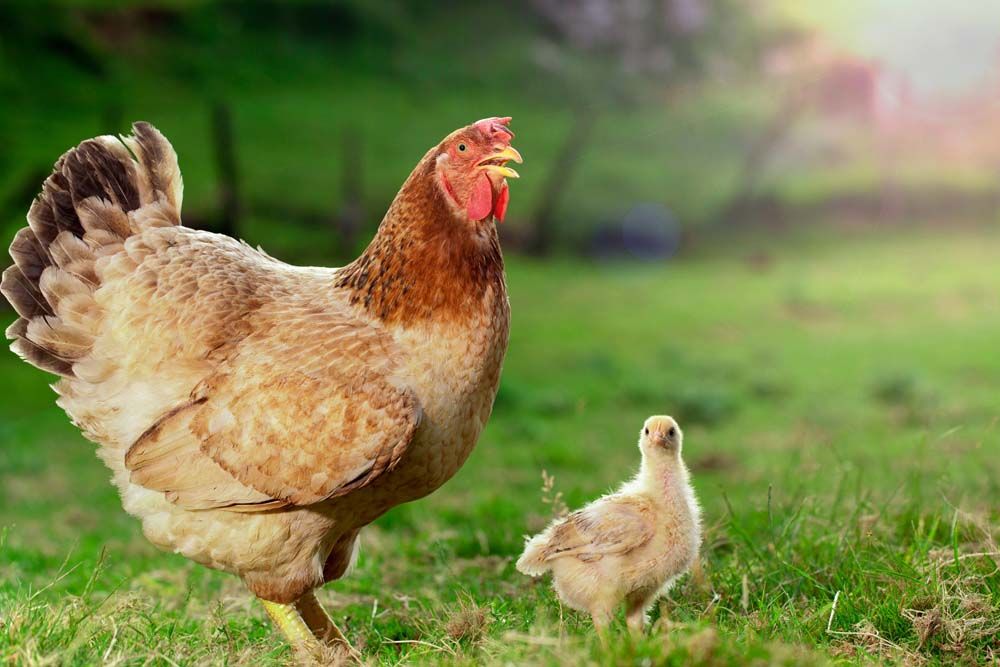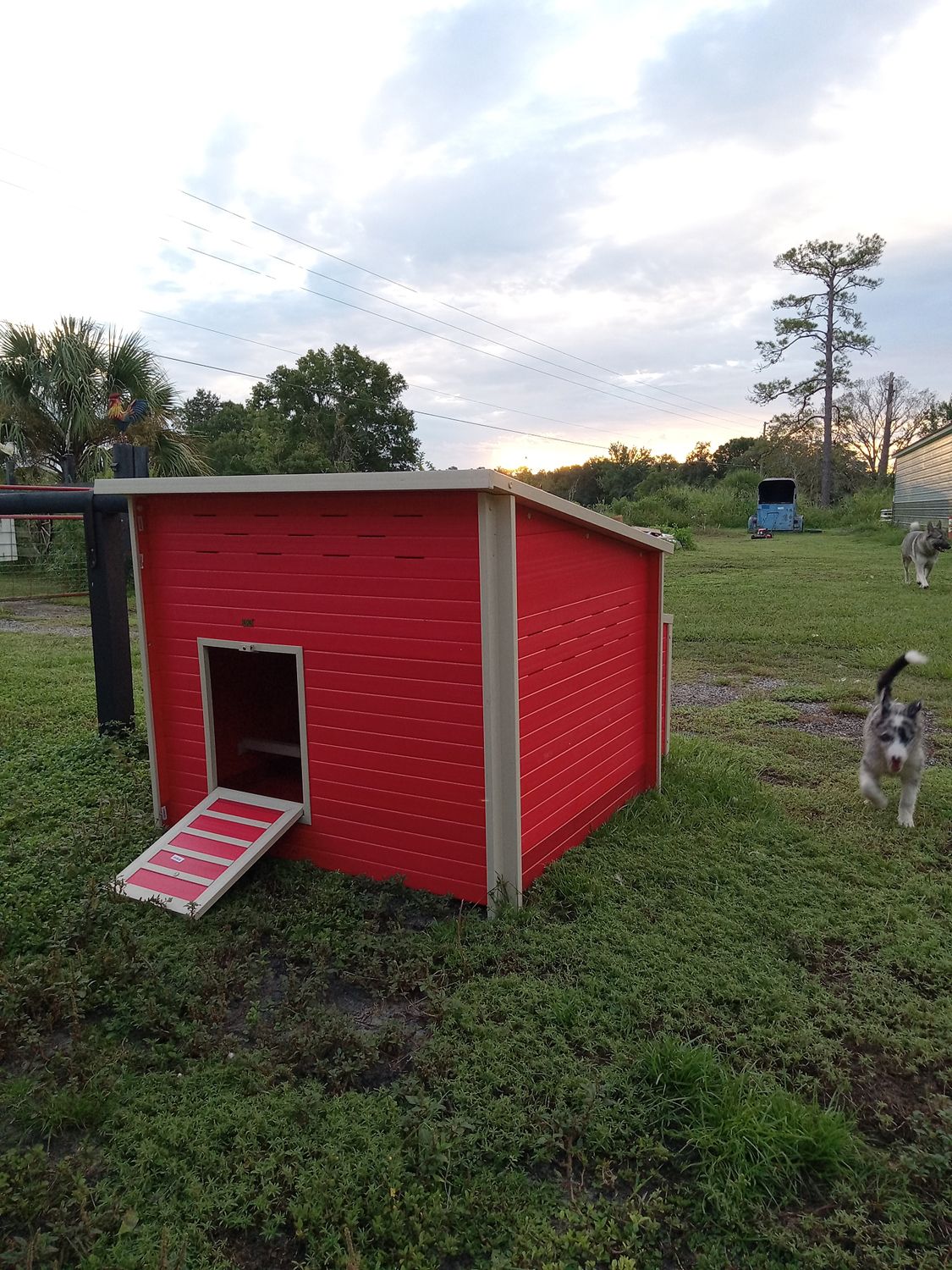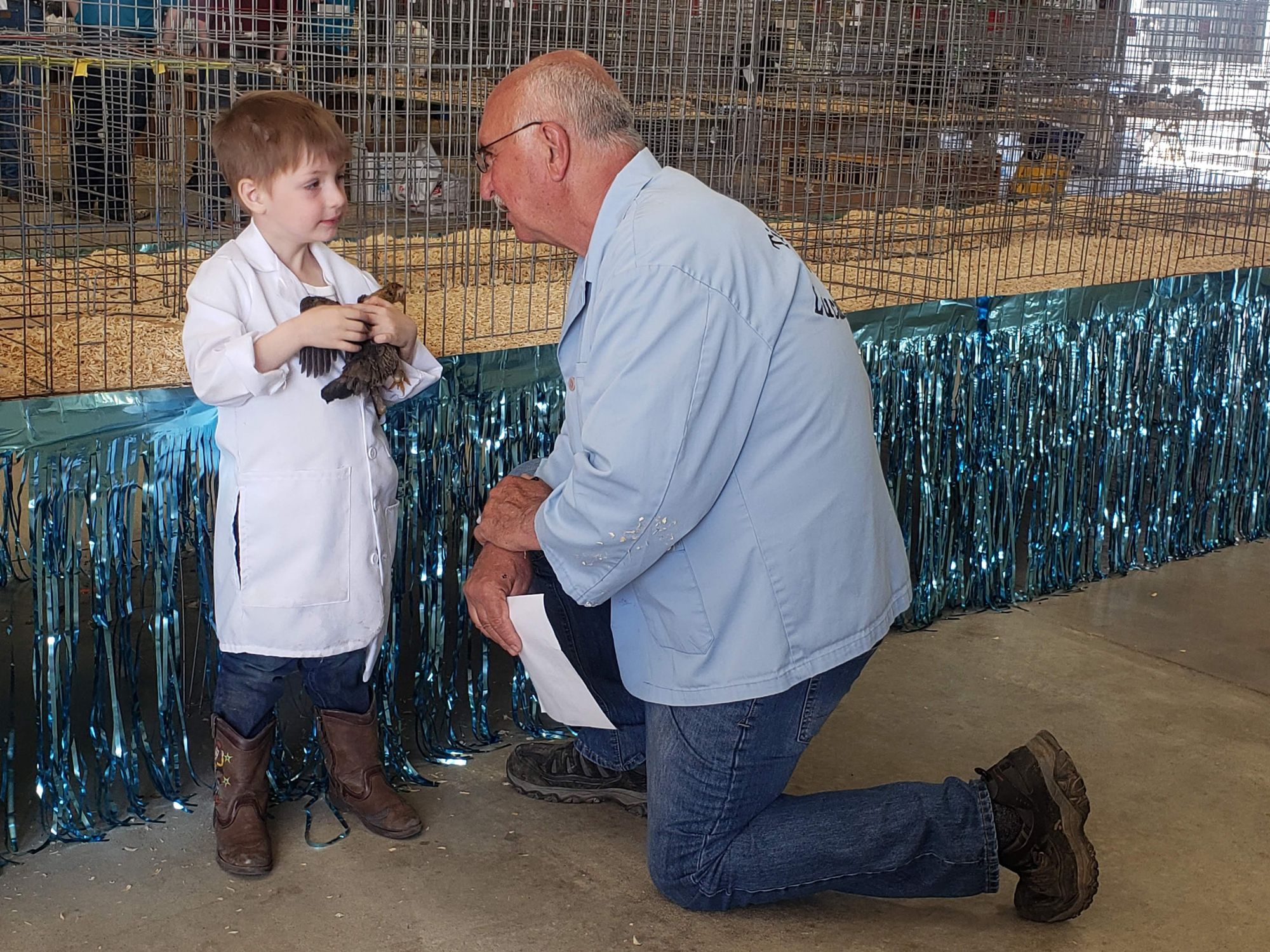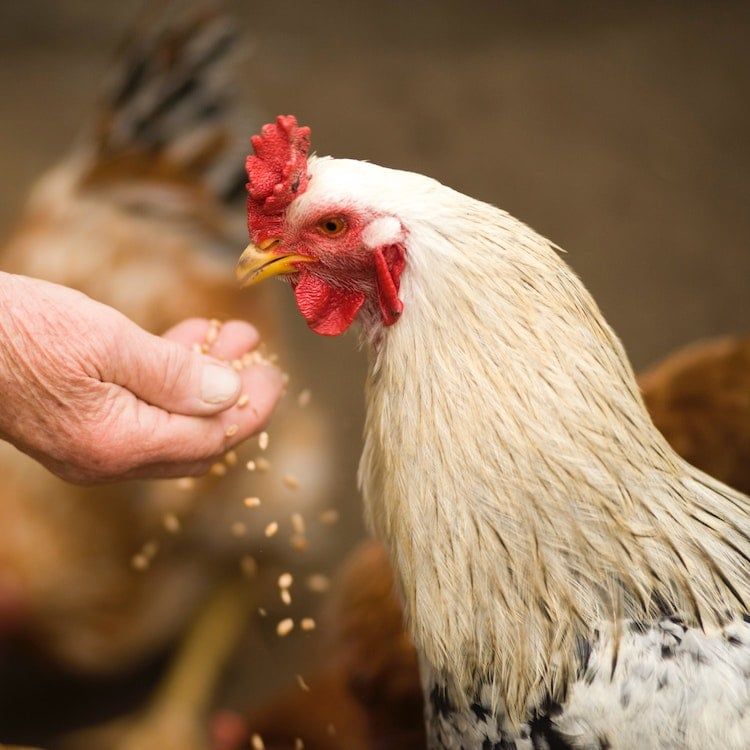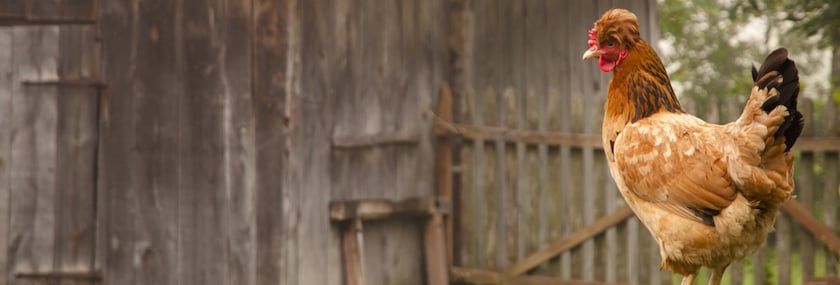Chicken coronaviruses: Infectious Bronchitis Virus


Infectious Bronchitis Virus and Your Flock
One thing is important to note at the beginning: Chickens get coronaviruses but they are different than human coronaviruses.
About chickens: we don’t get their coronaviruses and they don’t get ours
That being said, Infectious Bronchitis virus (IBV) can be a pain for chickens. IBV is responsible for depressed egg production and shell quality in addition to (largely) mild respiratory disease which can cause poor growth and even death in combination with other diseases or poor management practices.
Background on coronaviruses in chickens
Coronaviruses are ubiquitous in animals and they are typically associated with mild respiratory signs. While coronaviruses are ubiquitous, they typically “stick” to their species. In other words, as chicken coronaviruses (technically in the Gamma coronavirus group) stick to chickens, dog coronaviruses stick to dogs, and so on.
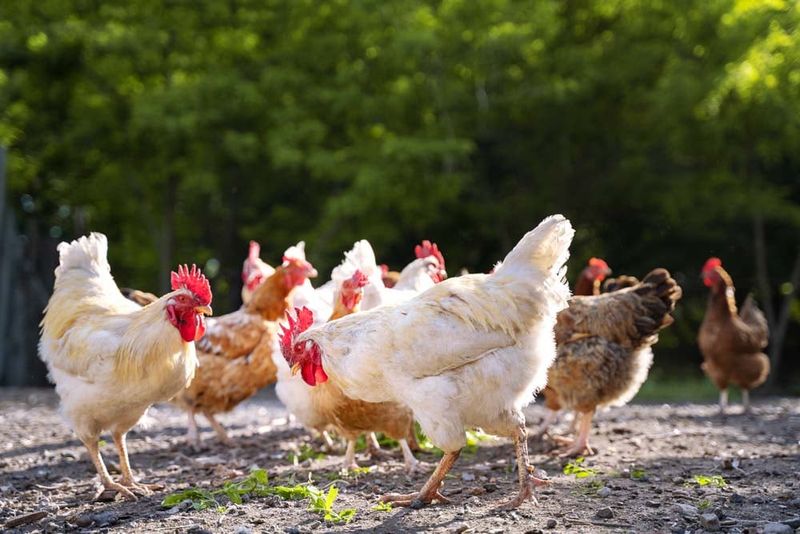
Very rarely do we have transmission of a virus from one species to another. Unfortunately we are dealing with a rare situation now where a virus (technically in the Beta coronavirus group) has “jumped the species barrier” from bats (scientists believe) to humans.
As noted, the poultry version of a coronavirus is a virus called Infectious Bronchitis Virus (IBV). Interestingly IBV has multiple “versions” that are typically identified with names like Delaware, California variant 99, and Arkansas-type, among others. This reflects the slightly different genetics of each strain.
Fortunately, in the poultry world there are different vaccines for different coronaviruses. It will be interesting to see if eventually COVID-19 mutates enough over time to require multiple vaccine types in humans (assuming that we are able to develop an efficacious COVID-19 vaccine).
So what are the specific signs of IBV?
Respiratory signs include:
- Sneezing
- Tracheal rales (aka a gentle rattle)
- Coughing
- Sniffling
- Snuffling
- Hawking
- Reverse sneeze
- Sometimes (although rare) a cough or two
In addition, chickens often have a “puffed up” appearance (irritation and inflammation around the mucus membranes of the eyes), are often reluctant to move and have reduced egg production. If they are in lay, the egg shells often feel and look wrinkled (Figure 1). The virus spreads primarily via the respiratory route.
At the flock level, the best way to observe the abnormal clinical signs described above is to be aware of what normal breathing sounds like.
So, pay attention to what you hear (or don’t hear) when you have a healthy flock. This will attune yourself to what is normal; when (or if) you hear a “tracheal rattle,” for example, you will know there is something abnormal going on in your flock.
Why is this important? Because the quicker you are able to identify a problem, the quicker you can isolate (i.e. quarantine) sick birds, and the quicker you can work with a veterinarian or diagnostic lab to further identify the problem and protect your flock.
On individual birds
If you think you hear something, pick up a chicken and hold the breast up against your ear and listen or feel for any abnormal breathing such as rattling. Just remember, the best time to observe chickens for respiratory problems is in the evening when the chickens are resting. However, one good trick during the day is clap your hands or whistle when you enter the coop. The chickens will often stop in their tracks and you can then hear abnormal breathing (i.e. rattling, etc.) if it is present.
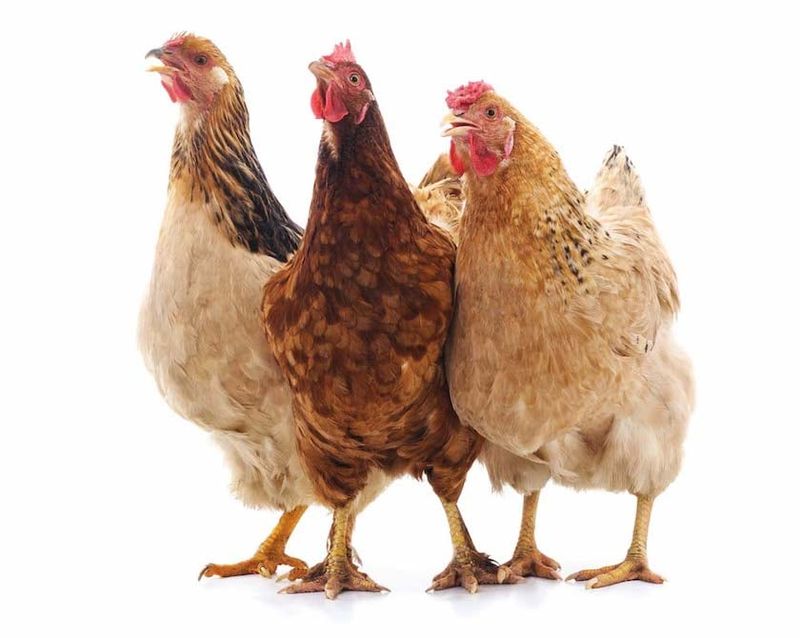
In addition to listening look for shortness of breath, inflammation around the eyes and an enlarged head due to swelling of the sinuses.
Other general signs of sick birds include:
- Sitting huddled together
- Fluffed up feathers
- Lethargy
Prevention of IBV
Highly infectious IBV is an enveloped virus, meaning it has a fatty membrane on its outside. This means the virus is easily inactivated by soap, other common disinfectants, UV radiation (aka sunlight), and dry warm conditions.
To reduce stress and conditions that foster respiratory disease acquisition and transmission, maintain optimal environmental conditions, practice good biosecurity, and when possible only purchase poultry from hatcheries that are part of the National Poultry Improvement Plan (NPIP).
Flocks that are part of NPIP are monitored for multiple diseases thus reducing the potential for purchasing birds/eggs that are carriers of infectious disease.
Remember that infectious respiratory diseases can enter your flock numerous ways, including via contact and indirect contact with wildlife, and fomites (i.e. non-living materials such as shoes and tires that act as a vector for disease onto your property). Therefore, the more you maximize biosecurity practices the safer your flock will be from contracting infectious diseases that are most often not treatable.
You may realize that many of the above recommendations are relatively easy to accomplish for your flock and husbandry style. You may also realize that some are not practical for your specific situation.
Philosophically, "don’t make perfect the enemy of good.” In other words, do the best you can with your resources and husbandry style. That type of incremental progress could the difference between a healthy flock and a sick flock.
Follow these recommendations on preventing disease
- House birds away from open water sources. Discourage your birds from interacting with wild birds and vice versa by confining your birds to their coop/enclosure.
- Do not share/exchange animals, equipment, or feed with fellow bird owners. At times, restricting access to your birds altogether may be necessary.
- Have designated clothing and boots that stay on your farm as opposed to using those same clothes and shoes when traveling outside your farm and potentially transmitting disease. If you hunt waterfowl, make sure your equipment and clothing are separate from your domestic poultry.
- Wildlife love chicken feed, so store feed in containers that are bird, rodent, and insect proof. Provide clean fresh water to your birds at all times. When obtaining birds isolate them away from other birds for 30 days before adding them into your flock. This will reduce the risk of introducing disease into the original flock.
- Work with your veterinarian, state/federal veterinarian, local university, farm advisor etc. Many of these resources are free! Having an extra pair of eyes, ears and perspective can make a big difference.
Tags:Pitesky's Poultry

Chicken Whisperer is part of the Catalyst Communications Network publication family.


